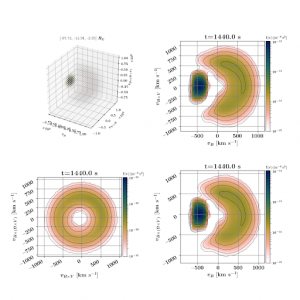The Space Physics Group of the University of Helsinki is a leading European group specialised both in computational modelling and in spacecraft observations. We have developed the global magnetospheric beyond-MHD simulation Vlasiator.
We have recently completed the first 6-dimensional runs of the entire magnetosphere-ionosphere system, offering high-resolution results both from the 3D real space as well as from the 3D velocity space. Our first runs show how the ion-kinetic physics at small scales lead to global reconfigurations, and vice versa. We can also study how changes in the ionosphere influence ion-kinetic physics within the magnetosphere.
We are excited to open two positions, as follows:
(1) A postdoctoral fellow position for a 2-year project, with a possibility of extension pending funding situation and performance. The postdoctoral fellow will focus on the 3D reconnection process within the simulation, looking both at the dayside and tail reconnection which occur simultaneously in the same simulation box.
(2) A PhD student will study the same processes as the postdoctoral fellow. This position is for four years, which is the nominal length of a Finnish PhD thesis project. The PhD student will write original papers that will comprise the thesis.
Prior knowledge and useful skills: Physics of magnetic reconnection, model development and/or data analysis, Python.
We offer a position in a dynamic and international research group, with a possibility to network and to develop as a researcher. We are innovative, high-spirited and a welcoming community. Finland is the happiest country in the world offering a great environment fostering equality, equality of opportunities, the world’s best schooling system, vacations, and possibilities for work-family balance.
The positions are available immediately. We start reviewing the applications on 14 November, but the positions will remain open until filled. Interviews are held in Nov-Dec.
For more information, please visit:
http://helsinki.fi/vlasiator
http://blogs.helsinki.fi/spacephysics/
https://www.helsinki.fi/sustainable-space
For specifics about the position, contact Minna Palmroth (minna.palmroth(at)helsinki.fi). Interested candidates should send their informal application, CV, list of publications, and a maximum of three names to act as references to Hewan.Zewde(at)helsinki.fi by 11 Nov 2022, and cc minna.palmroth(at)helsinki.fi.

